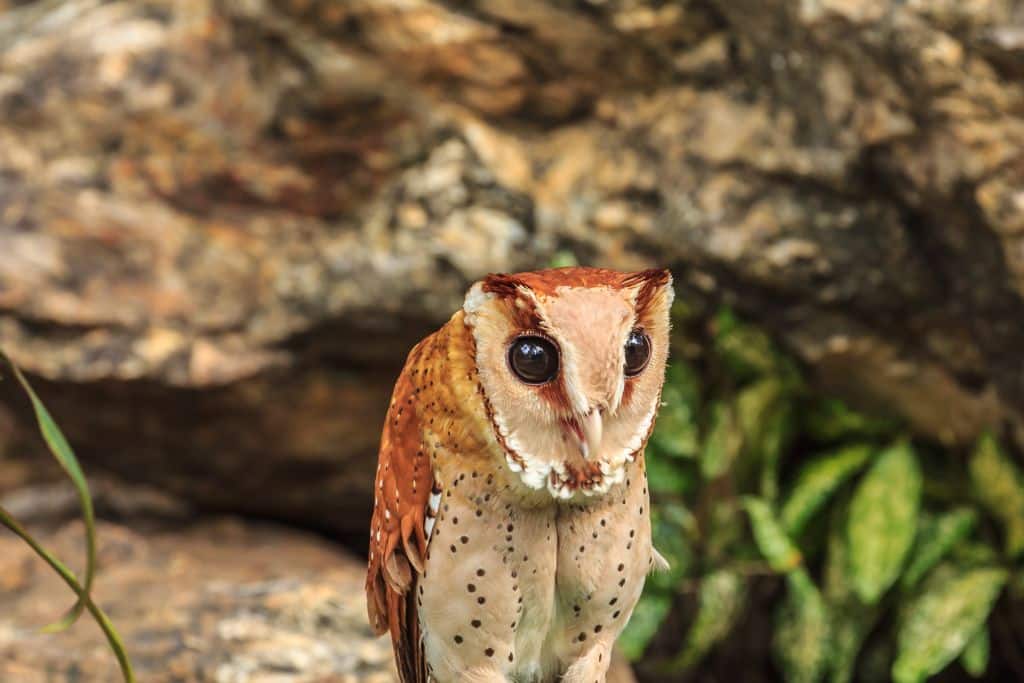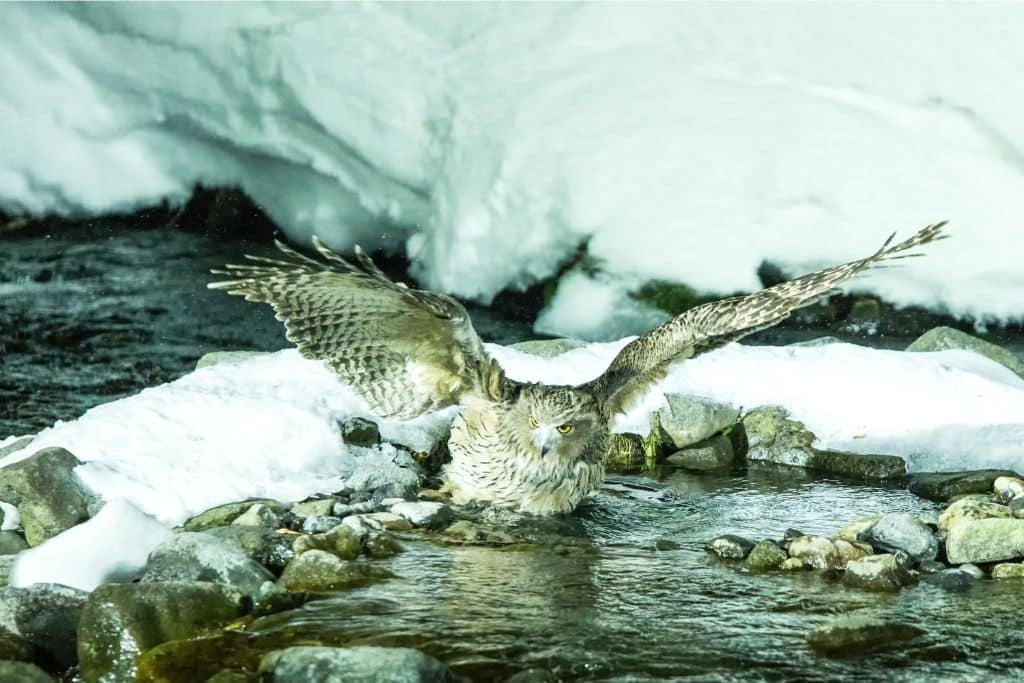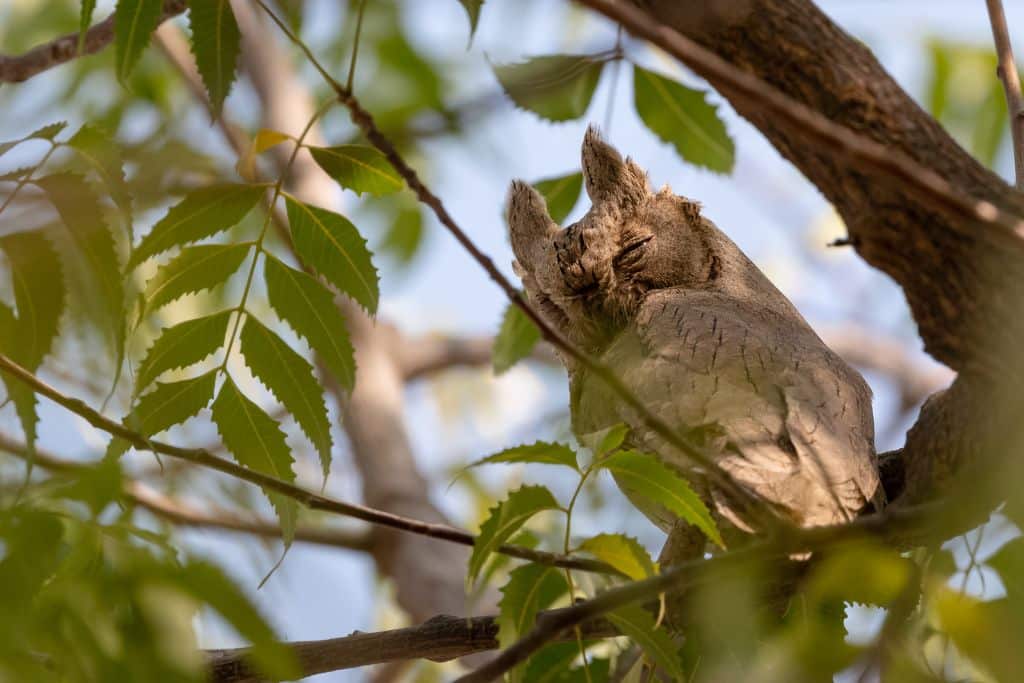The world’s roughly 250 owl species, belonging to the order Strigiformes, can be found in every continent except Antarctica. Not only are they widespread globally, but these adaptable birds of prey also inhabit diverse biomes, including deserts, prairies, woodlands, rainforests, Arctic tundra, snow-capped mountains, and wetlands. Despite the versatility of owls, several owl species are currently listed as endangered on the Red List of the International Union for Conservation of Nature (IUCN), due to ongoing threats to their habitats. In this article, we explore six of the most endangered owl species in 2023.
—
6 Endangered Owl Species In 2023
1. Congo Bay-owl
In 2016, the IUCN assessed the Congo Bay-owl (Phodilus prigoginei) as endangered. This barn owl species occupies high-altitude grasslands and rainforests in the Democratic Republic of Congo, specifically, in the eastern South Kivu province. Reports have come primarily from the Itombwe Mountains region. However, despite their name, these owls may possibly be found in neighbouring Burundi and Rwanda, too. They might also inhabit the Nyungwe Forest adjacent to the Itombwe Mountains.
Being bay owls (genus Phodilus), Congo Bay-owls are likely smaller than other barn owls, with facial discs in a U- or V-shape. But they are highly elusive and are rarely seen. In fact, the species is so evasive that according to Edge of Existence, only two confirmed sightings, both of female members, have been documented in the last few decades: one in 1951 and the other in 1996. There was a potential sighting in 1974.

The Red List states that around 3,000 to 10,000 Congo Bay-owls are extant in the wild, but their elusiveness makes accurate estimates difficult. Threats to the Itombwe Mountains – and thus, to the Congo Bay-owl – include forest clearing, logging, and mining. Because of this ongoing habitat destruction, the IUCN suspects the owl species’ numbers are in decline.
2. Forest Owlet
The Forest Owlet (Athene blewitti), endemic to central Indian forests, was classified as endangered in 2018. The species belongs to the Athene genus of owls, also called Little Owls. It was a lost/missing species for over a century – between the years 1884–1997 – presumed to be extinct until its rediscovery in 1997.
The Forest Owlet is small in size, only 23 centimetres. It is recognisable by its light cream underside and fairly large beak and skull. Unlike the Congo Bay-owl, Forest Owlet sightings have been increasing over the last decade or so. Based on these recent observations, including those in new sites, the Red List has increased its population estimate from 250 to between 250–1,000 individuals, across various locales in India.
Nevertheless, the owl species is still endangered and faces several existential threats. These include habitat destruction, loss, and degradation due to logging, forest fires, and irrigation dams.
3. Blakiston’s Fish Owl
Blakiston’s Fish Owl (Ketupa blakistoni or Bubo blakistoni) received its endangered status from the IUCN in 2016. Endemic to Northeast Asia’s forests and inland wetlands (in Northeast China, Hokkaido, and eastern Siberia), it is the largest extant owl species. By contrast with the little Forest Owlet (23 centimetres), the Blakiston’s Fish Owl can reach up to 72 centimetres in length.

Its appearance is somewhat similar to the Eurasian Eagle-owl (Bubo bubo) but the latter has thick, black chest streaks and erect ear tufts. Previously, the Blakiston’s Fish Owl also belonged to the Bubo genus (Latin for “owl”), encompassing horned, eagle, and snowy owls – and some of the world’s heftiest owl species. However, it was reclassified into the Ketupa owl genus, with other fish owls.
Fish owls, as the name suggests, are a subgroup of eagle owls that hunt fish along with small mammals. Although Ketupa originally contained only three fish owl members, more owls later broadened the genus (including others from the Bubo genus).
According to the Red List, there are around 140 Blakiston’s Fish Owls in Japan, and an estimated 250–400 in the Siberian territory of Primorye. The IUCN’s best guess for total living individuals ranges from 1,500 to 3,750. As the species relies on “clean, stocked, relatively undisturbed waterways,” its numbers are likely to continue declining.
4. Moheli Scops-owl
The scops owls belong to the Otus genus and are found only in the Old World. Otus encompasses 59 different species and is therefore the biggest owl genus. Given the many scops owl varieties, their conservation statuses range from “Least Concern” through to “Critically Endangered.”
The scarce Moheli Scops-owl (Otus moheliensis) has been listed as endangered since 2017. Its name is derived from the Moheli island of the Comoro Islands (Comoros), near Madagascar, to which the species is endemic.
This small owl, about 22 centimetres in length, has a brown colour morph and a reddish-brown one and is often described as being very vocal. Several sources indicate that the Moheli Scops-owl’s range is just one sole mountain in Moheli’s centre.
The raptor’s limited habitat and endangered state mean that there are likely only around 260 mature adults presently living on the island. Numbers are presumed to be decreasing based on the loss of quality habitats caused by deforestation.
5. Seychelles Scops-owl
A second rare, endangered scops owl is the Seychelles Scops-owl (Otus insularis). Listed as critically endangered in 2020, its numbers hover around just 250 extant individuals, as with the Moheli Scops-owl. Another similarity the Seychelles Scops-owl shares with its Moheli relative is its restriction to the Mahe island in the Seychelles. More accurately, the owl is limited to the Morne Seychellois National Park.
Previously, the bird’s range covered most of the Seychelles islands. However, mass deforestation, urban development, and the introduction of invasive species and predators saw reduced numbers. Also referred to as the Bare-legged Scops-owl, this little owl once featured on Seychellois souvenir stamps.
Other critically endangered scops owls include the Siau Scops-owl (Otus siaoensis) and the Annobon Scops-owl (Otus feae).

6. Pernambuco Pygmy-owl
On the “Critically Endangered” list since 2019, the incredibly scarce Pernambuco Pygmy-owl (Glaucidium mooreorum) is another miniature owl on the cusp of extinction – if not already extinct. This pygmy owl is even tinier than the aforementioned Forest Owlet and scops owls, with a reported length of just 13 centimetres.
The species was first described only back in 2002, following the examination of some skins and recorded vocalisations. Extant individuals have not been observed since 2001.
Edge of Extinction writes that the Pernambuco Pygmy-owl, if it still exists, is now limited to the 4.8 square kilometres of the Reserva Biologica de Saltinho, a biological reserve. However, several park surveys by ornithologists and rangers have failed to locate a single individual in over 20 years. If Pernambuco Pygmy-owls still survive, there are likely fewer than 50. As is often the case, their decline was brought about by habitat destruction, degradation, and fragmentation.
Featured image: Takashi Muramatsu/Flickr (CC BY 2.0)
You might also like: 10 of the World’s Most Endangered Species in 2023


















